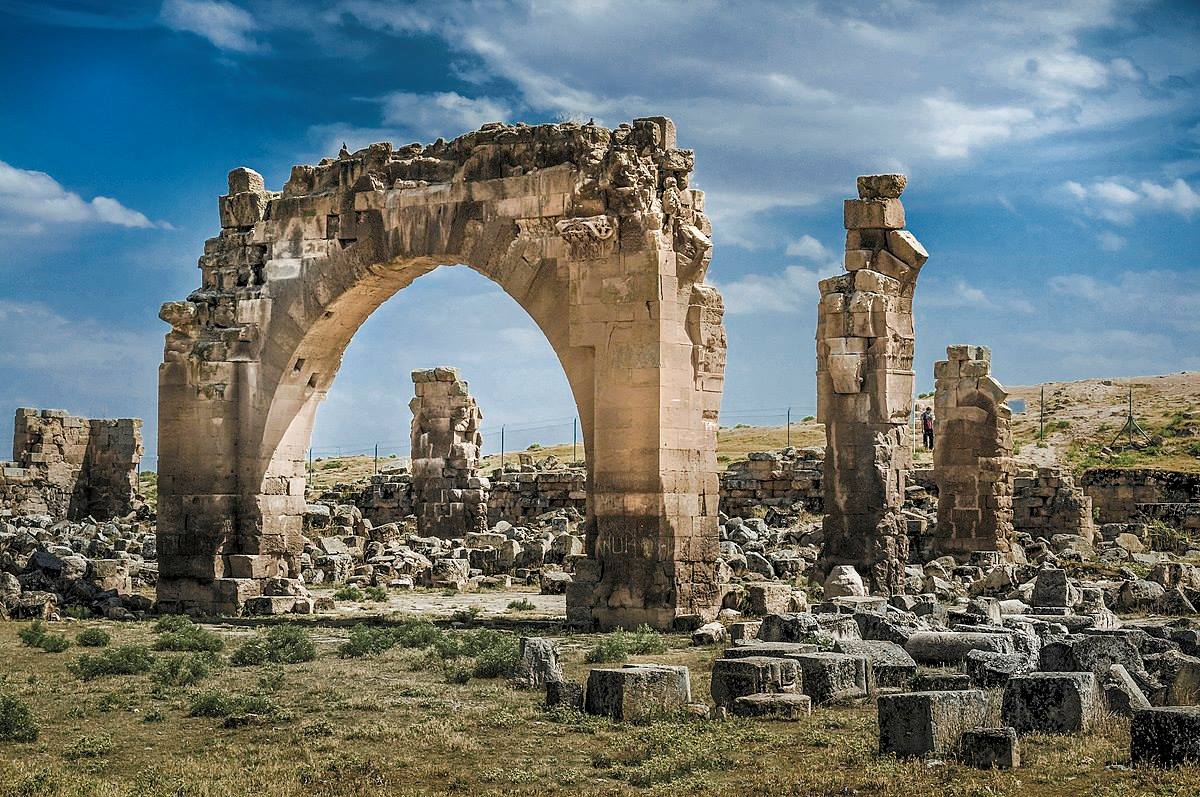
The Fall of Harran is a gripping tale that has fascinated historians and enthusiasts alike. This ancient city, once a bustling hub of commerce and culture, met a tragic end that left an indelible mark on history. But what led to its downfall? Was it a catastrophic event, a series of unfortunate decisions, or perhaps a combination of both? In this blog post, we will delve into 40 intriguing facts about the Fall of Harran. From its strategic significance to the key players involved, each fact will shed light on the mysteries surrounding this historic collapse. Buckle up for a journey through time that promises to be as educational as it is captivating.
Key Takeaways:
- Harran, an ancient city in Turkey, has a rich history dating back to 3rd millennium BCE. It was a hub of trade, religion, and learning, influenced by various empires and cultures.
- Despite facing invasions, economic changes, and natural disasters, Harran's legacy lives on through archaeological discoveries, modern cultural references, and its unique beehive-shaped houses.
The Historical Context of Harran
Harran, an ancient city located in modern-day Turkey, has a rich history that spans thousands of years. Understanding its fall requires delving into various historical, cultural, and political aspects.
-
Ancient Origins: Harran dates back to the 3rd millennium BCE, making it one of the oldest continuously inhabited cities in the world.
-
Strategic Location: Positioned at the crossroads of major trade routes, Harran was a significant commercial hub in ancient Mesopotamia.
-
Religious Significance: The city was known for its moon god temple, which attracted pilgrims from across the region.
-
Assyrian Influence: Harran came under Assyrian control in the 9th century BCE, becoming an important administrative center.
-
Babylonian Conquest: In 610 BCE, the Babylonians captured Harran, marking the beginning of a turbulent period for the city.
The Rise and Fall of Empires
Harran's fate was closely tied to the rise and fall of empires that sought control over the region. Each empire left its mark on the city, contributing to its eventual decline.
-
Neo-Assyrian Empire: Under Assyrian rule, Harran flourished as a center of learning and culture.
-
Neo-Babylonian Empire: The Babylonians' conquest led to significant changes in the city's administration and culture.
-
Persian Empire: Harran became part of the Achaemenid Empire in the 6th century BCE, further integrating it into a vast network of trade and communication.
-
Alexander the Great: The city fell to Alexander in 331 BCE, introducing Hellenistic influences.
-
Seleucid Empire: After Alexander's death, Harran became part of the Seleucid Empire, experiencing a period of relative stability.
The Roman and Byzantine Eras
The Roman and Byzantine periods brought both prosperity and challenges to Harran. The city's strategic importance continued to make it a target for various powers.
-
Roman Conquest: In 53 BCE, the Romans took control of Harran, incorporating it into their vast empire.
-
Battle of Carrhae: The city was the site of the famous Battle of Carrhae in 53 BCE, where the Romans suffered a significant defeat against the Parthians.
-
Byzantine Rule: Harran became part of the Byzantine Empire in the 4th century CE, experiencing a period of Christianization.
-
Persian Invasions: The city faced multiple invasions by the Sassanian Persians, leading to periods of instability.
-
Arab Conquest: In the 7th century CE, Harran was conquered by the Arab Muslims, marking the beginning of Islamic influence.
The Islamic Golden Age
Under Islamic rule, Harran experienced a cultural and intellectual renaissance. Scholars and scientists flocked to the city, contributing to its legacy.
-
House of Wisdom: Harran became a center for translation and learning, with scholars translating Greek and Roman texts into Arabic.
-
Astronomy Hub: The city's observatories attracted astronomers from across the Islamic world.
-
Philosophical Contributions: Harran's scholars made significant contributions to philosophy, particularly in the fields of logic and metaphysics.
-
Medical Advancements: The city's physicians were renowned for their medical knowledge and practices.
-
Mathematical Innovations: Harran's mathematicians played a crucial role in the development of algebra and trigonometry.
The Decline of Harran
Despite its periods of prosperity, Harran eventually faced decline due to various factors, including invasions, economic shifts, and natural disasters.
-
Mongol Invasion: In the 13th century, the Mongols invaded Harran, causing widespread destruction.
-
Economic Decline: Changes in trade routes led to a decline in the city's economic importance.
-
Natural Disasters: Earthquakes and other natural disasters further weakened Harran's infrastructure.
-
Ottoman Rule: The city became part of the Ottoman Empire in the 16th century, but by then, it had lost much of its former glory.
-
Abandonment: By the 18th century, Harran was largely abandoned, with its population moving to other areas.
Archaeological Discoveries
Modern archaeological efforts have uncovered much about Harran's past, shedding light on its rich history and cultural significance.
-
Excavations: Archaeologists have conducted extensive excavations at Harran, uncovering ancient buildings, artifacts, and inscriptions.
-
Temple of Sin: The remains of the moon god temple have provided valuable insights into the city's religious practices.
-
City Walls: The discovery of Harran's ancient city walls has helped historians understand its defensive strategies.
-
Residential Areas: Excavations of residential areas have revealed details about the daily lives of Harran's inhabitants.
-
Trade Artifacts: Items such as pottery, coins, and tools have illustrated the city's role in ancient trade networks.
Harran in Modern Culture
Harran's legacy continues to influence modern culture, with references in literature, film, and academic studies.
-
Literary References: The city has been mentioned in various historical novels and academic texts.
-
Film and Media: Harran's history has been depicted in documentaries and films, bringing its story to a wider audience.
-
Tourism: The ruins of Harran attract tourists and history enthusiasts from around the world.
-
Academic Studies: Scholars continue to study Harran's history, contributing to our understanding of ancient civilizations.
-
Cultural Heritage: Efforts are being made to preserve Harran's archaeological sites and promote its cultural heritage.
Fun Facts About Harran
Beyond its historical significance, Harran has some interesting and lesser-known facts that add to its allure.
-
Beehive Houses: The city is famous for its unique beehive-shaped houses, which are still used by locals today.
-
Biblical References: Harran is mentioned in the Bible as the place where Abraham lived before moving to Canaan.
-
Astrological Significance: The city's ancient observatories were used to study the stars and planets, contributing to early astronomy.
-
Cultural Melting Pot: Throughout its history, Harran was a melting pot of cultures, with influences from Assyrians, Babylonians, Persians, Greeks, Romans, Byzantines, and Arabs.
-
Modern-Day Harran: Today, Harran is a small village, but its rich history continues to attract scholars and tourists alike.
Final Glimpse at Harran's Fall
The Fall of Harran stands as a gripping chapter in history, marked by tragedy, resilience, and transformation. This ancient city, once a bustling hub of commerce and culture, faced a series of catastrophic events that led to its decline. From natural disasters to invasions, Harran's story is a testament to the fragility of civilizations. Yet, amid the ruins, there are tales of survival and rebirth that continue to inspire. Understanding Harran's fall offers valuable lessons about the impermanence of human achievements and the enduring spirit of its people. As we reflect on these facts, we gain a deeper appreciation for the complexities of history and the indomitable will to persevere. Harran's legacy, though marred by downfall, remains a poignant reminder of the ever-changing tapestry of human existence.
Frequently Asked Questions
Was this page helpful?
Our commitment to delivering trustworthy and engaging content is at the heart of what we do. Each fact on our site is contributed by real users like you, bringing a wealth of diverse insights and information. To ensure the highest standards of accuracy and reliability, our dedicated editors meticulously review each submission. This process guarantees that the facts we share are not only fascinating but also credible. Trust in our commitment to quality and authenticity as you explore and learn with us.


